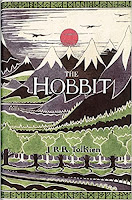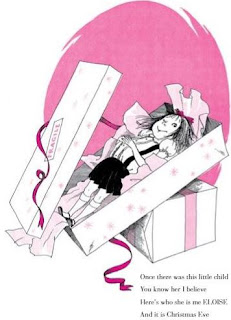Welcome!
Wednesday, January 12, 2022
Appreciate a Dragon with a review of A Dragon's Guide to the Care and Feeding of Humans
Monday, January 10, 2022
Classic Book Monday with a review of The Reluctant Dragon
Fiction
For ages 7 and up
Holiday House, 2020, 978-0823447251
Once day a shepherd comes back from his work tending his sheep in a real state. It would appear that there is a dragon living in a cave on the Downs, and everyone knows that dragons and sheep just don’t mix. Luckily for everyone, the shepherd’s son is a scholarly young fellow and he announces that he - knowing more about dragons than everyone else - will take care of the scaly problem.
The boy and the dragon soon strike up a pleasant acquaintance and the boy soon learns that the dragon is a "lazy beast" who is not in the slightest bit interested in fighting knights or eating maidens. He is quite happy to rest quietly, write sonnets, and mind his own business. The problem is that the dragon simply cannot seem to grasp the idea that people have a terrible preconceived notions about dragons. What on earth is the boy to do with this reluctant dragon who won’t fight to protect himself when Saint George, of dragon slaying fame, comes to town?
Using the rich language that he is famous for, Kenneth Grahame takes us back to time when dragons were a part of everyday living and when little boys could indeed have wonderful adventures. The characters, many of whom have a touch of the South Downs accent in their 'voices,' are charming, funny, and often surprising. Ernest H. Shepard, whose drawings of Pooh are beloved by so many, has superbly captured the essence of the story in his artwork. Sophie Blackall, whose own books have won numerous awards, has written a foreword for this special anniversary edition.
All in all this is a book to treasure for years to come, and it would make an excellent addition to a collection of classic children’s literature.
Friday, January 7, 2022
Ways of seeing - With a review of A Stone Sat Still
Wednesday, January 5, 2022
Times of hardship with a review of Ida B... and her plans to Maximize fun, avoid disaster and (Possibly) save the world
Ida B... and her plans to Maximize fun, avoid disaster and (Possibly) save the world Katherine Hannigan
Fiction
For ages 9 and up
HarperCollins, 2011, 978-0060730260
Ida B is an extremely happy nine-year-old. Her parents have the good sense not to send her to a school which she hates. Instead, she is homeschooled and she loves it. She loves living on the farm with her Mama and her Daddy, and she loves her conversations with the apple trees in the orchard, and her talks with the burbling stream. She loves the games that she plays with herself, and the walks that she takes with Daddy in the evenings. Everything is "righter than right."
Then one day the apple trees warn her that hard times are coming. Ida does not want to believe them. What could possibly go wrong with her perfect life? What happens is that Mama gets cancer and everything changes. First of all Mama is sick all the time and so she cannot give Ida B the attention she is used to having. Then Daddy has to sell some of their land to pay for Mama's medical bills. Ida B is appalled. How can Daddy sell some of their beloved orchard and let strangers cut down some of her trees? Then, to top it off, Daddy tells her that she has to go to school, neither he nor Mama are in a position to homeschool her. Ida B feels completely betrayed and she decides there and then that she is never going to allow herself to trust or to love anyone again.
Monday, January 3, 2022
The January Bookish Calendar and Classic Book Monday with a review of The Hobbit
Dear Bookish Friends,
Happy New Year! Another uncertain year lies ahead of us, but one thing that we can be certain of is that there is a wealth of good books out there for ourselves and for the children in our lives. Thank goodness for that!
First of all, as it is the beginning of the month, I would like to direct you to the January Bookish Calendar. Here you will find a calendar on which are noted the birthdays of famous people. Many of these notations have links to books about the people in question. Special days, such as Appreciate a Dragon Day (January 16th), are also on the calendar. As I have a deep fondness for dragons, I shall be sharing several dragon books with you this month.
You will see on this calendar that January the 3rd is J.R.R. Tolkien's birthday. There is a link on the calendar to reviews of books about the author. Thank you, dear man, for your stories, the worlds that you created, and your marvelous characters. In honor of his birthday I bring you a review of The Hobbit on this Classic Book Monday.
What many of you might not know is that Tolkien was an accomplished artist. The image at the top of this page is one of the pieces that he created for The Hobbit. There is a marvelous book, The art of the Hobbit that was published in 2012 in which his art for this book is showcased. I shall be buying a copy of this book for myself today!
J.R.R. Tolkien
Fiction
For ages 10 and up
Houghton Mifflin Harcourt, 2012, 978-0547928227
Bilbo Baggins is very happy with his quiet life in his comfortable hobbit hole under the hill. Meals areoften, abundant, and predictable, and everything is as it should be. He is therefore very discombobulated when Gandalf the wizard appears on his doorstep one day, and he tries to get rid of the disturbing old man as quickly as possible. He is even more horrified when thirteen dwarves and Gandalf arrive for tea the very next day. It would appear that they want Bilbo to join them on an adventure. The dwarves want to get back the treasure that Smaug the dragon stole from them, and they want to hire Bilbo to help them; he will be their "burglar." Bilbo very much wants to refuse this offer, and yet for some confusing reason this fails to happen. Before he quite knows what is happening, Bilbo is riding on a pony, heading off on an adventure which may very well be his undoing.
As it happens, the dwarves are very lucky that they took Bilbo with them for he saves their lives several times over. Not only is he quick thinking and brave, but he also finds a ring of invisibility, which makes it possible for him to do all kinds of remarkable things.
In the end, quiet little Mr. Baggins does indeed fulfill his role as the expedition's burglar. In the process he becomes very fond of a side of himself that he otherwise would never have discovered; he learns that he is able to out-riddle an evil little cave-dwelling monster; he can fight huge spiders; he figures out how to rescue his friends from captivity; and he even talks to a huge dragon. It would appear that Bilbo is more than just an unassuming little hobbit who likes to have his meals on time. That other side of his character helps him rise to challenges that would fell many, and he thus earns the respect and admiration of elves, dwarves, and men alike.
This is a tale that has truly stood the test of time, and it has delighted readers of all ages since its publication in 1937. Tolkien is without a doubt one of the greatest fantasy writers of all time.
Saturday, January 1, 2022
Tuesday, December 28, 2021
Let's Celebrate Chocolate!
Friday, December 24, 2021
Thursday, December 23, 2021
Eloise - One of my favorite book characters
In 1958 Eloise in Christmastime was published and once again we see how Eloise manages to drive everyone around her to distraction, and leave chaos in her wake. At the same time, she is oh so loveable and this festive book is a treat.















